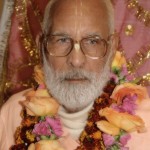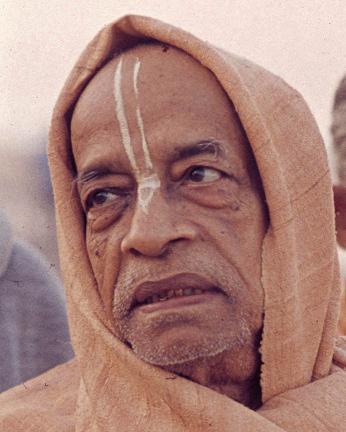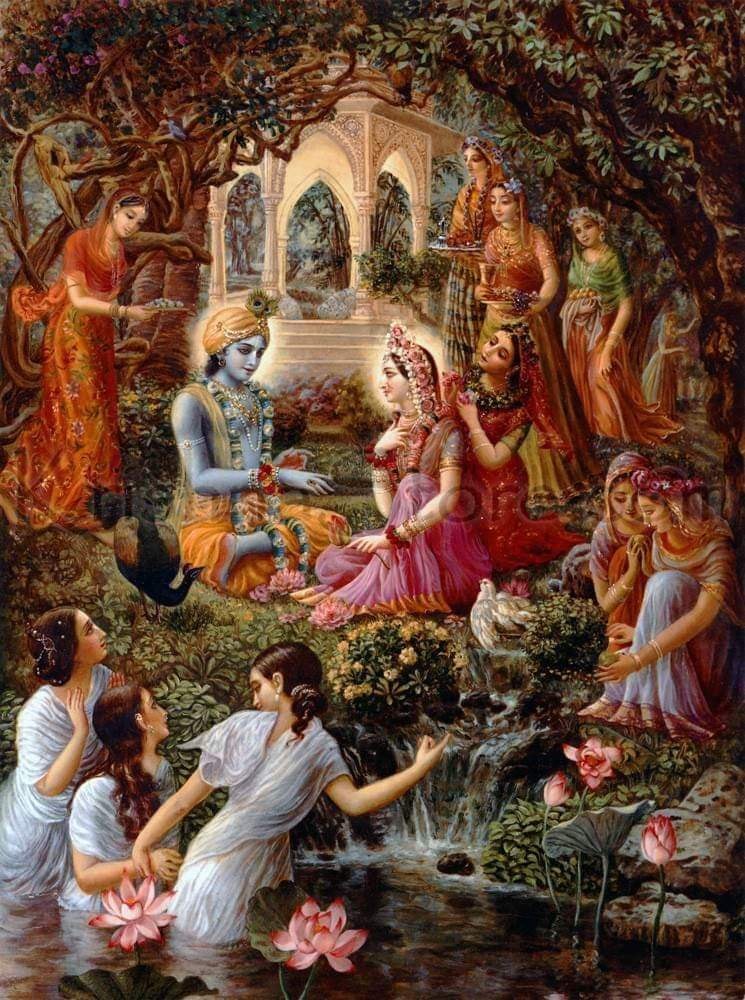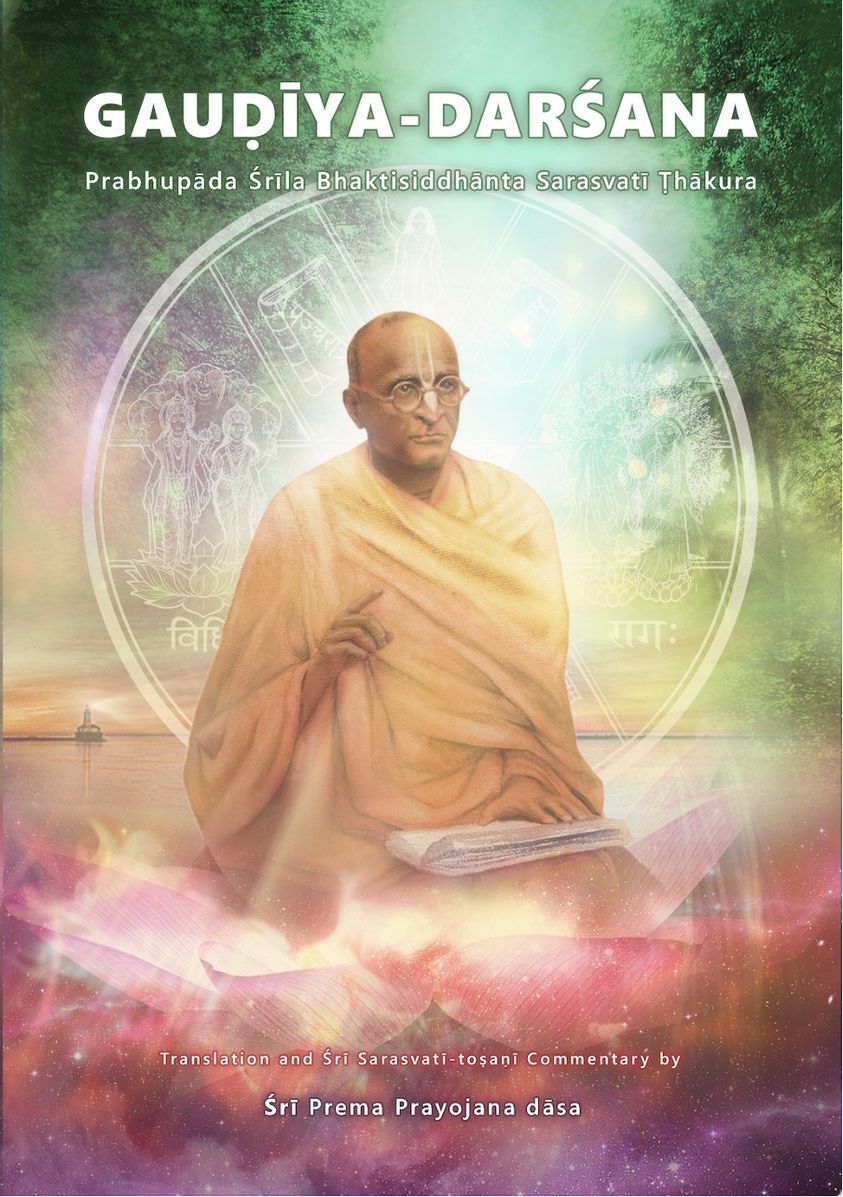
Below you find excerpts of purports to the Bhagavad Gita, Chapter 2 text 17, by the two greatest spiritual masters of this century. Srila Bhaktivedanta Swami Prabhupada and Srila Bhaktivedanta Narayana Maharaja. The verses will hopefully be updated every day. Devarsi
Bhagavad Gita Chapter Two Text 17
Translation and purport (excerpts) by Srila Bhaktivedanta Swami Prabhupada
That which pervades the entire body you should know to be indestructible. No one is able to destroy that imperishable soul.
00
PURPORT
This verse more clearly explains the real nature of the soul, which is spread all over the body. Anyone can understand what is spread all over the body: it is consciousness.
Everyone is conscious of the pains and pleasures of the body in part or as a whole. This spreading of consciousness is limited within one's own body. The pains and pleasures of one body are unknown to another. Therefore, each and every body is the embodiment of an individual soul, and the symptom of the soul's presence is perceived as individual consciousness. This soul is described as one ten-thousandth part of the upper portion of the hair point in size. The Śvetāśvatara Upaniṣad (5.9) confirms this:
"When the upper point of a hair is divided into one hundred parts and again each of such parts is further divided into one hundred parts, each such part is the measurement of the dimension of the spirit soul." Similarly the same version is stated:
"There are innumerable particles of spiritual atoms, which are measured as one ten-thousandth of the upper portion of the hair." [Caitanya Caritamrta. Madya Lila 19.140]
Therefore, the individual particle of spirit soul is a spiritual atom smaller than the material atoms, and such atoms are innumerable. This very small spiritual spark is the basic principle of the material body, and the influence of such a spiritual spark is spread all over the body as the influence of the active principle of some medicine spreads throughout the body. This current of the spirit soul is felt all over the body as consciousness, and that is the proof of the presence of the soul. Any layman can understand that the material body minus consciousness is a dead body, and this consciousness cannot be revived in the body by any means of material administration. Therefore, consciousness is not due to any amount of material combination, but to the spirit soul. In the Muṇḍaka Upaniṣad (3.1.9) the measurement of the atomic spirit soul is further explained:
"The soul is atomic in size and can be perceived by perfect intelligence. This atomic soul is floating in the five kinds of air (prāṇa, apāna, vyāna, samāna and udāna), is situated within the heart, and spreads its influence all over the body of the embodied living entities. When the soul is purified from the contamination of the five kinds of material air, its spiritual influence is exhibited."
The haṭha-yoga system is meant for controlling the five kinds of air encircling the pure soul by different kinds of sitting postures — not for any material profit, but for liberation of the minute soul from the entanglement of the material atmosphere.
So the constitution of the atomic soul is admitted in all Vedic literatures, and it is also actually felt in the practical experience of any sane man. Only the insane man can think of this atomic soul as all-pervading viṣṇu-tattva.
The influence of the atomic soul can be spread all over a particular body. According to the Muṇḍaka Upaniṣad, this atomic soul is situated in the heart of every living entity, and because the measurement of the atomic soul is beyond the power of appreciation of the material scientists, some of them assert foolishly that there is no soul. The individual atomic soul is definitely there in the heart along with the Supersoul, and thus all the energies of bodily movement are emanating from this part of the body. The corpuscles which carry the oxygen from the lungs gather energy from the soul. When the soul passes away from this position, the activity of the blood, generating fusion, ceases. Medical science accepts the importance of the red corpuscles, but it cannot ascertain that the source of the energy is the soul. Medical science, however, does admit that the heart is the seat of all energies of the body.
Such atomic particles of the spirit whole are compared to the sunshine molecules. In the sunshine there are innumerable radiant molecules. Similarly, the fragmental parts of the Supreme Lord are atomic sparks of the rays of the Supreme Lord, called by the name prabhā, or superior energy. So whether one follows Vedic knowledge or modern science, one cannot deny the existence of the spirit soul in the body, and the science of the soul is explicitly described in the Bhagavad-gītā by the Personality of Godhead Himself.
__________________________________________________________
 Bhagavad Gita Chapter Two Text 17
Bhagavad Gita Chapter Two Text 17
Translation and purport (excerpts) by
Srila Bhaktivedanta Narayana Maharaja
That by which the entire body is pervaded, you should know to be indestructible. No one is able to destroy the imperishable atma.
00
PURPORT
That which is sat (eternal truth), cannot be destroyed. Sri Bhagavan is speaking this cloak beginning with avinasi to clarify this statement. The fundamental nature (svarupa) of the jiva (the soul) is such that it pervades the whole body. There is evidence of this in the sruti and in smriti also: In the Srimad- Bhagavatam 11.16.11. Among that which is subtle I am the jiva.. Also in the Mundaka Upanishad (3.1.9) it is stated: "The atma (soul) is very minute. It can only be realised in a pure heart which is free from the three modes. The life air, divided into prana, apana, vyana, samana and udana, remains situated in the body.. In the Svetasvatara Upanishad (5.9) it is said: "One should know that the jivatma (the soul) is the size of one ten-thousandth the tip of a hair." Also in the Aitareya Upanishad (5.8):"The jiva (the soul) has an extremely subtle form" The above statements of sruti prove that the jivatma (soul) is atomic in size; it is very subtle. Just as the entire body can be nourished by the application to the head or chest, of a potentherb or a precious gem set in lac, similarly the jivatma is able to pervade the entire body although it is situated in one place. There is no difficulty in reconciling this. Being bound by material designations, the jiva enters various species and wanders in different heavens and hells.
There are two indestructible truths. One is the atomic conscious and the other is the manifesting source and controller of all jivatmas, (or Jivas, the trillions of individual souls) Paramatma (The Lord In The Heart) The same Paramatma is present as a witness in that which is both inert and conscious. The jivas are unlimited. An individual atma exists in each gross body. The jiva in each body individually experiences happiness and misery. The Supreme Absolute Truth, Paramatma, is situated only as a witness and is untouched by the jiva.s happiness and distress. In this sloka, the nature of the indestructible jiva has been described. How is it that the atomic jivatma, being situated in one part of the body, is experienced throughout the entire body? Sri Krishna answers this question in the present sloka. His statement above is verified by Vedanta-sutra (2.3.22): Just as a single drop of hari-candana applied to one place makes the whole body cool, similarly, the jivatma, situated in one part of the body, is experienced throughout the entire body. This is also verified in the smriti-sastra: anumatro .py ayam jivah svadehe vyapya tishthatiyatha vyapya sarirani hari-candana-viprushah Just as a drop of hari-candana applied to one part of the body gives pleasure to the whole body, similarly, the jivatma, being situated in one part of the body, pervades the whole body. If the question is asked, .In which part of the body does the jivatma reside?. the answer is, .Within the heart.. Hridi hyesha atmeti (Shat-Prasni-sruti). This is also stated in the Vedanta-sutra:(Brahma-sutra 2.3.24). Like light, the jivatma, by its quality, pervades the whole body. Although the jivatma is atomic, by its quality of consciousness it pervades the entire body. Just as the sun, situated in one part of the sky, illuminates the whole universe, similarly, the jivatma also pervades the whole body. This has been statedby Sri Bhagavan Himself in Gita (13.33).


 Posted in
Posted in 








